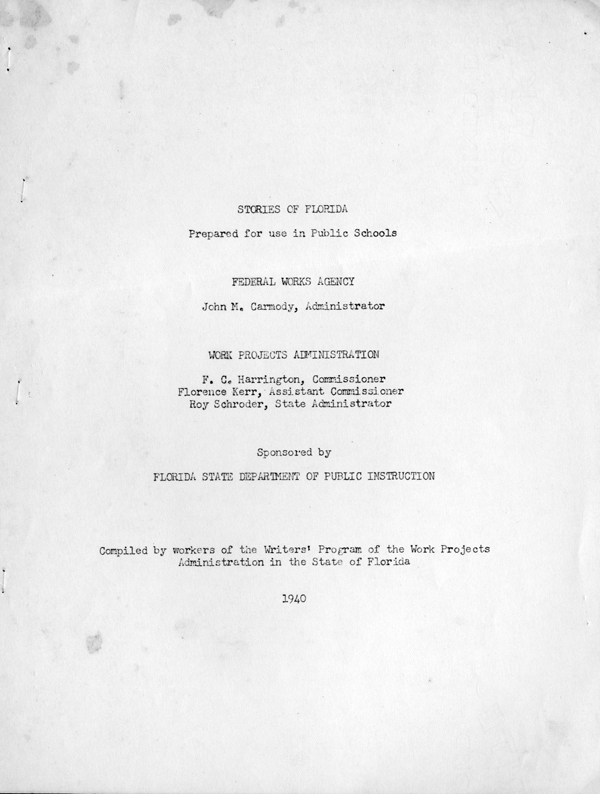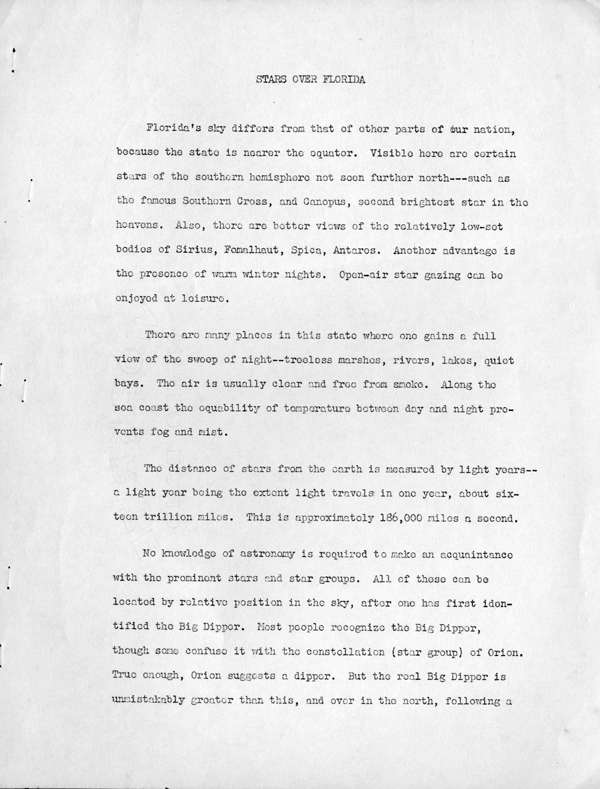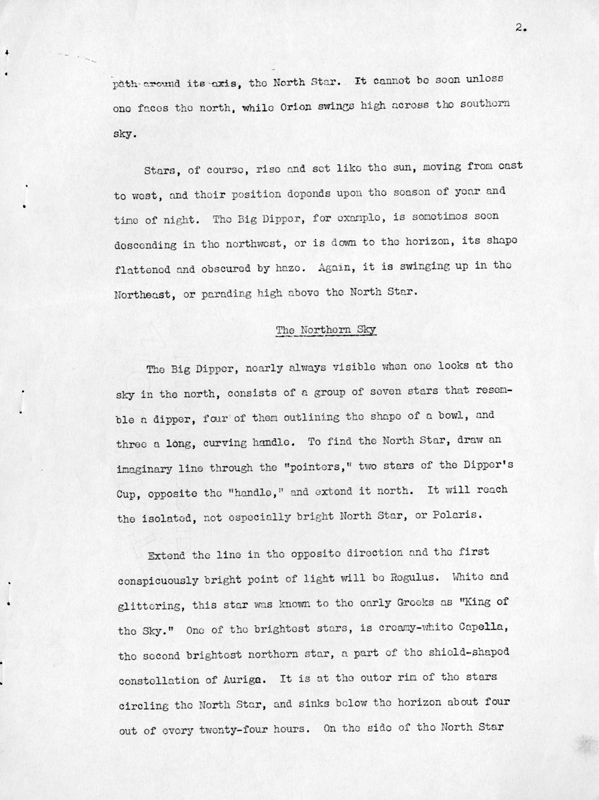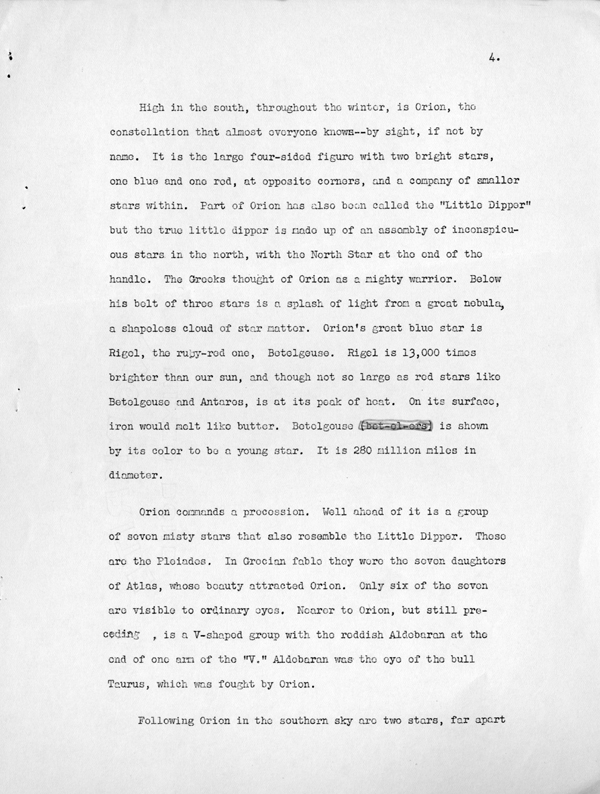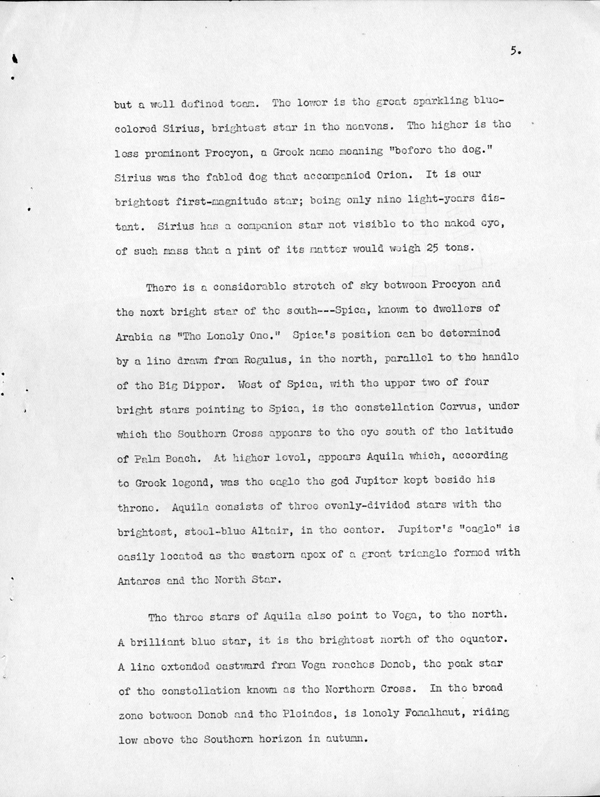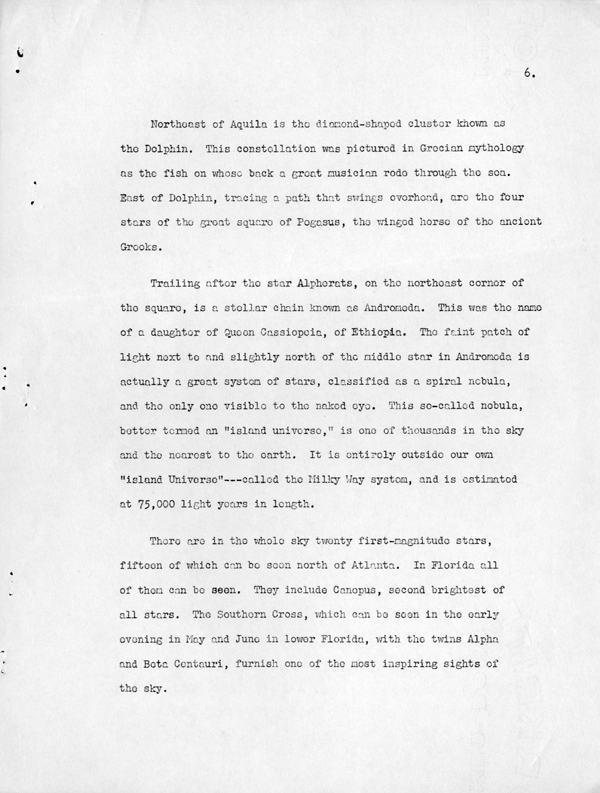Florida Memory is administered by the Florida Department of State, Division of Library and Information Services, Bureau of Archives and Records Management. The digitized records on Florida Memory come from the collections of the State Archives of Florida and the special collections of the State Library of Florida.

State Archives of Florida
- ArchivesFlorida.com
- State Archives Online Catalog
- ArchivesFlorida.com
- ArchivesFlorida.com
State Library of Florida
Related Sites
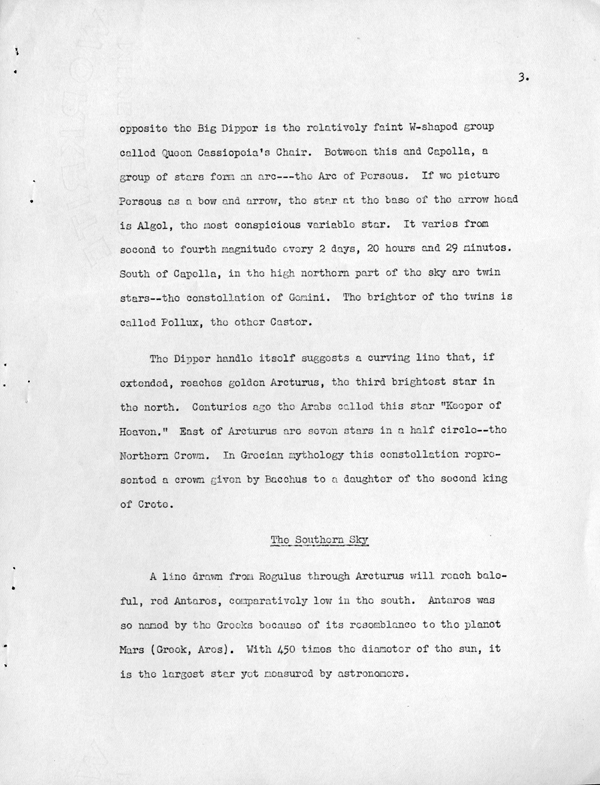
Description of previous item
Description of next item

Title
Published Date
[page 3]
opposite the Big Dipper is the relatively faint W-shaped group called
Queen Cassiopeia's Chair. Between this and Capella, a group of stars
form an arc-the Arc of Perseus. If we picture Perseus as a bow and
arrow, the star at the base of the arrow head is Algol, the conspicuous
variable star. It varies from second to fourth magnitude every 2 days, 20
hours and 29 minutes. South of Capella, in the high northern part of the
sky are twin stars-the constellation of Gemini. The brighter of the twins
is called Pollux, the other Castor.
The Dipper handle itself suggests a curving line that, if extended,
reaches golden Arcturus, the third brightest star in the north. Centuries
ago the Arabs called this star "Keeper of Heaven." East of Arcturus are
seven stars in a half circle-the Northern Crown. In Grecian mythology
this constellation represented a crown given by Bacchus to a daughter of
the second king of Crete.
The Southern Sky
A line drawn from Regulus through Arcturus will reach baleful,
red Antares, comparatively low in the south. Antares was so named by
the Greeks because of its resemblance to the planet Mars (Greek, Ares).
With 450 times the diameter of the sun, it is the largest star yet measured
by astronomers.
Title
Subject
Description
Source
Date
Contributor
Format
Language
Type
Identifier
Published Date
Image URL
Thumbnail
Transcript Path
Image Path
Image Path - Large
Chicago Manual of Style
Stars Over Florida. 1940. State Archives of Florida, Florida Memory. <https://www.floridamemory.com/items/show/181542>, accessed 15 December 2025.
MLA
Stars Over Florida. 1940. State Archives of Florida, Florida Memory. Accessed 15 Dec. 2025.<https://www.floridamemory.com/items/show/181542>
AP Style Photo Citation

 Listen: The Folk Program
Listen: The Folk Program
